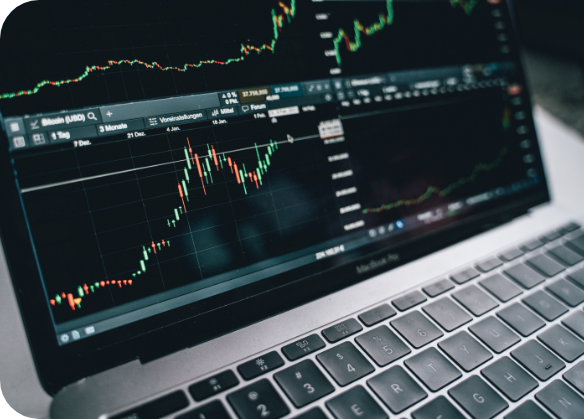
Most of the investments that we make are with the objective of our financial goals. However, each type of investment has varying risks, returns, tenure, and features. Some products are more useful for beginners, while some require experience and research. Some can be bought by youngsters, while a select few are only for senior citizens. Therefore, it is imperative to map the goals of each type of investment and decide to invest in it. Before going to the general thought of either going the FD or PPF route or taking some risk in stocks, one should explore various types of investment and their features. This will do justice to your goals and hard-earned money. This will also set you on the right path to achieving financial independence and enriching retirement. And if you are retired, this post and follow-up articles can benefit you too in choosing the suitable instruments as it is common these days that senior citizens are being deceived and sold equity-linked products citing low returns in FD.
So let us explore the different types of investment available in the market. As this is an introductory post, the objective is to briefly cover most of the investment products; we will provide further details on most of them in a follow-up post.
Fixed income products
Most of the wealth in India is under Fixed income products. These are mostly debt products That provide relatively stable returns compared to equity. Debt products also help an investor against extreme market volatility and provide a cushion to the portfolio. There are several products under Fixed Income.
1. Bank Products
These are the most popular products among all fixed income. Flagship products are FD and RD. These products are highly liquid and considered safe; however, one has to be careful if small banks and NBFCs are issuing them. Except for the 5-year lock-in deposits, most don’t give 80C benefits or tax-free interest. Taxes are higher on these products, especially for high-income individuals.


2. Government schemes
The Government of India supports most of the schemes, and they fix the interest rates as per the Government’s policy. One can purchase most schemes from Post Offices or nationalized banks; major private banks also offer few of the schemes.. While some products like PPF provide dual benefits of 80C and tax-free interest, others offer limited interest-free benefits like SCSS. KVP and NSC are trendy products of the post office. While NSC provides 80C benefits, KVP doesn’t offer any tax benefits.
Regarding senior citizens, the popular schemes include PMVVY and SCSS. These are exclusively for people above 60 years old and provide higher interest rates than FD. PMVVY is a pension scheme with ten years of duration, while SCSS is more of a savings scheme with a maturity of five years. You can take PMVVY from LIC before 31 March 2023, while Post Office or select banks issue SCSS and have no time limit to avail of it. On tax benefits, PMVYY doesn’t provide any tax benefits, while SCSS provides 80C benefits up to 1.5 lacs.
3. Company Deposits
Company deposits are similar to Bank FD; however, they are deposits with a company and not with a bank. It provides higher interest rates but also carries higher risk as the company may not be able to meet its financial obligations. One must invest in these assets only after analyzing the reputation and financials of the company. There have been several cases of delayed payments and defaults on payments.
4. Debt Mutual Funds
Debt mutual funds invest in fixed-income securities, including government securities, money market instruments, debentures, and corporate bonds. In other words, they lend investors’ money to companies and the Government. However, this instrument carries some risk depending on the duration and type of the borrower. Apart from the credit risk, debt funds also carry interest rate risk. Most of these securities have a credit rating which helps fund managers determine the risk. One can invest in this product from as low as one day to several years. It is more tax efficient than traditional products such as FD. Debt funds provide stable returns and are suitable for investors seeking regular income with low-risk tolerance. Fluctuations in the equity market do not impact the returns.
To park money for a lower duration without much risk, one can avail of products such as Overnight funds, Liquid funds, Ultra short duration funds, money markets, etc. For the short duration of 1-3 years, one can opt for short-duration funds that lend to companies with a good track record. For a more extended period of 3-5 years, one can consider a Dynamic bond fund or long-duration fund. However, there would be a risk of a negative economic cycle, and lenders may be vulnerable to interest rate changes. Some safer options are banking, PSU funds, and Gilt funds. Banking and PSU funds invest in banks and public sector companies, and therefore there is a shallow risk of non-payment. Gilt funds invest in government securities, and consequently, the risk of non-payment is minimum, but this, too, is subjected to interest rate fluctuations. If the interest rates rise sharply, the NAV of a Gilt fund falls. Therefore, investing in the Gilt fund in a falling interest rate regime is more profitable.
5. Bonds
Bonds are debt instruments or fixed-income security that companies or the government issue to raise capital for business or government spending. The bondholder gets a fixed interest rate known as a coupon and which one pays at fixed intervals such as monthly, quarterly, annually, etc. One bears the principal to the bondholder at maturity. Bonds have varying coupon rates, maturity, and liquidity; therefore, investors can choose bonds based on these factors or their financial goals. Although bonds are considered safe, they still carry specific risks such as interest rate risk, credit default risk, and prepayment risk. If the bonds are issued fresh, they can be bought from the primary market or through authorized brokers after getting listed on the stock exchange. As the bonds are listed, it trades on exchanges, and their value fluctuates. Although there are fixed coupon rates, the bond’s value reduces if the interest rate rises and vice-versa.
Investors have a wide variety to choose from as per their needs. Most of them are issued by the Government of India or state governments or municipalities and therefore carry minimum risk. Corporate bonds offer higher returns; however, one must be careful of the company’s ability to return capital on time. By Investing in capital gains bonds, one can save long-term capital gains. These bonds are issued by government bodies such as REC, PFC, IRFC, etc.

Insurance
Insurance companies have several long-term products; however, for investments, only a few are beneficial, and investors should be able to differentiate between pure insurance and investment products. Among popular products for acquisition, ULIP and annuities stand tall.
1. Annuity plans
Most Insurance companies issue annuity plans. An annuity plan offers guaranteed and regular income. An annuity Plan is more suitable for a retirement portfolio and is a long-term investment.
The investor makes the payments as lump sum or at regular intervals, and in return, the insurance company provides disbursements immediately or after a gap of specific years. An investor may opt for payments for fixed number of years or the rest of his life. Investors can also choose from various types of returns, including fixed, variable, and indexed. One can also customize the payment schedule and choose when one wants the payments. However, there are restrictions on withdrawals; therefore, one must read the policy documents carefully before investing.
2. ULIP
Unit Linked Insurance Plan combines insurance and investment plans. An investor opting for ULIP has to pay a regular premium, some of which goes towards insurance coverage. The remaining is invested in financial products, including both equity and debt. An investor can choose the ratio of equity and debt as per the risk appetite. These assets will be low as a portion of the money goes towards coverage and administrative charges.
Furthermore, requirement of coverage could be higher; therefore; it doesn’t serve the purpose of high coverage or excellent returns. Furthermore, if the market fluctuates, the return in the first few years might be even lower than the premium paid; therefore, investors should know the risk before investing and the risk of withdrawing early. ULIP has good tax benefits both in 80C, and the maturity benefits are exempted from tax.
Equity
Equity is one of the most popular asset classes globally. While in India, the penetration has been historically low, in recent years, its popularity has increased, and a record number of Demat accounts have been opened. There are various ways to participate in the equity market.
1. Stocks
One can directly purchase stocks through brokers in significant exchanges. However, one should only take this route with understand of the company and the market, as one can face a considerable loss.



2. Mutual Funds
This is a relatively less risky option to participate in equity markets; however, one should choose reputed funds. In recent years Indians have been taking this route, and the monthly Sips are at an all-time high and didn’t budge even during covid and market corrections. However, one should also be aware of the risk involved in mutual funds, as losing capital is one of the risks.
3. ETF
One can trade Exchange Traded Funds similar to mutual funds on exchanges, and its costs are relatively low compared to a mutual fund.
4. Future & Options
Options and Futures are sophisticated products in the form of future contracts between two parties. Futures and Options are one of the riskiest products in equity markets, and one can face massive losses in it within a few days. Therefore, one should enter this after proper research, training, and considering all the risks involved.
Crypto
Cryptocurrency is a digital currency that runs on blockchain technology. Bitcoin is the most popular cryptocurrency, followed by Ethereum.
Cryptocurrencies aren’t real assets and are very volatile. One can invest in cryptocurrency from crypto exchanges. However, cryptocurrencies are getting banned in several countries, and few countries are developing digital currencies. One should be mindful before investing in Crypto as the technology is forward-looking, and till countries recognize it, there may be significant legal and financial risks.

Commodities
Commodities provide diversification to a portfolio and act as a hedge against inflation. In the inflationary period, stocks and bonds nose dive; however, commodities offer good returns. Geopolitics, government regulations, global events, etc., significantly impact commodity prices. Commodities are complicated investments and highly volatile. Therefore, only seasoned investors should invest or trade in them. One can directly invest in commodities or through commodities options and futures in India. One needs a commodity trading account to trade in commodities, separate from an equity account.
Real Estate
Real estate is one of the oldest and most common investment products. Residential property investment is prevalent in India, and even now, commercial properties are quite popular, which includes office space and retail. However, real estate investments are big ticket sizes, and most young investors can only invest in them once they have saved a significant amount in several years.
1. INVITs and REITs
There is a product available in India where one can invest in real estate with a small ticket size. It is known as Real Estate Investment Trust (REIT). REITs also get listed on exchanges.
One can trade REITs as stock. Investors can buy its stock on exchanges through their brokers. REITs invest in real estate assets, hold them and earn through rentals. As per regulations, REITs must pass on their earnings to investors resulting in a high dividend yield. Stock exchange has also listed INVITs, which are identical to REITs, but they invest in Infrastructure assets such as toll roads, towers, etc.
Final Thoughts
It is always beneficial to know about the various investment options and then go in-depth about the investment one wants to pursue. In terms of building an investment portfolio, one should diversify as per age, goals, and risk appetite. We should always balance the portfolio with a portion of equity, fixed income, or debt and some liquid assets such as FD or liquid funds. Gold can also take place in the portfolio. However, the allocation to each investment should be according to one’sone’s financial goals. The follow-up article will pick some investment categories and provide more details. Till then, keep reading and exploring the world of investment.
(Disclaimer: This article is for educational purposes and is not investment advice. Please consult an investment advisor before deciding on any investment.)
Newer Post
Newer Post
Subscribe to new post
The One Liner
Useful Links
Order Related Queries
Useful Links
Order Related Queries



